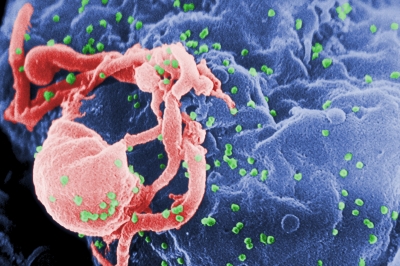
The earliest known case of infection with HIV-1 in a human was detected in a blood sample collected in 1959 from a man in Kinshasa, Democratic Republic of the Congo. (How he became infected is not known.) Genetic analysis of this blood sample suggested that HIV-1 may have stemmed from a single virus in the late 1940s or early 1950s.
HIV progressively destroys certain types of white blood cells called CD4+ lymphocytes. Lymphocytes help defend the body against foreign cells, infectious organisms, and cancer. Thus, when HIV destroys CD4+ lymphocytes, people become susceptible to attack by many other infectious organisms. Many of the complications of HIV infection, including death, usually result from these other infections and not from HIV infection directly.
HIV-1 originated in Central Africa during the first half of the 20th century when a closely related chimpanzee virus first infected people. The global spread of HIV-1 began in the late 1970s, and AIDS was first recognized in 1981.
In 2016, about 36.7 million people, including 2.1 million children under age 15, were living with HIV infection worldwide. There were 1 million AIDS-related deaths, and 1.8 million people were newly infected.
Most (95%) new infections occur in the developing world. Almost 70% of new HIV infections occur in sub-Saharan Africa, with more than half occurring in women and 1 in 10 occurring in children under 15 years old. However, in many sub-Saharan African countries, the number of new HIV infections has greatly decreased, partly because of international efforts to provide treatment and strategies for prevention.
Picture Credit : Google

